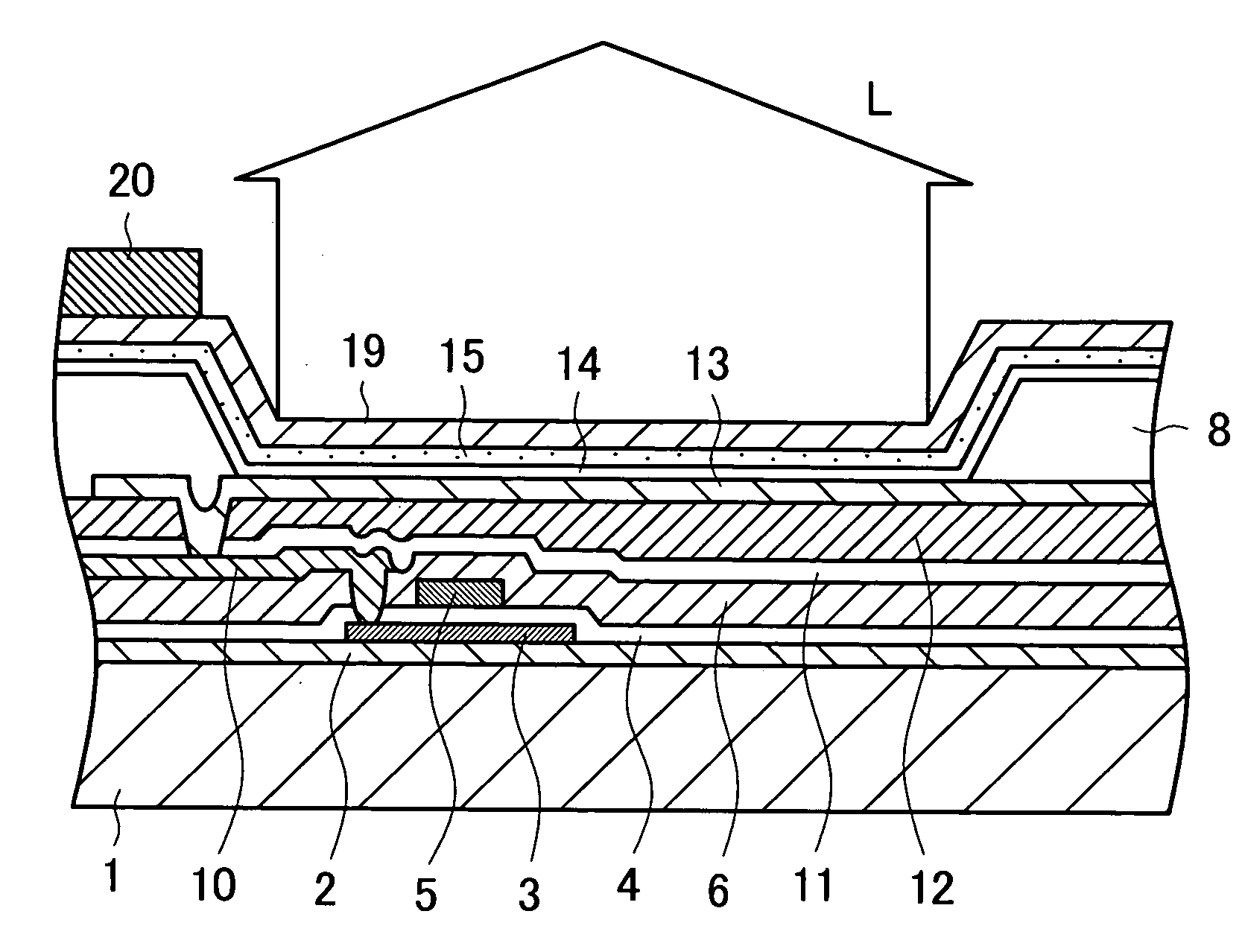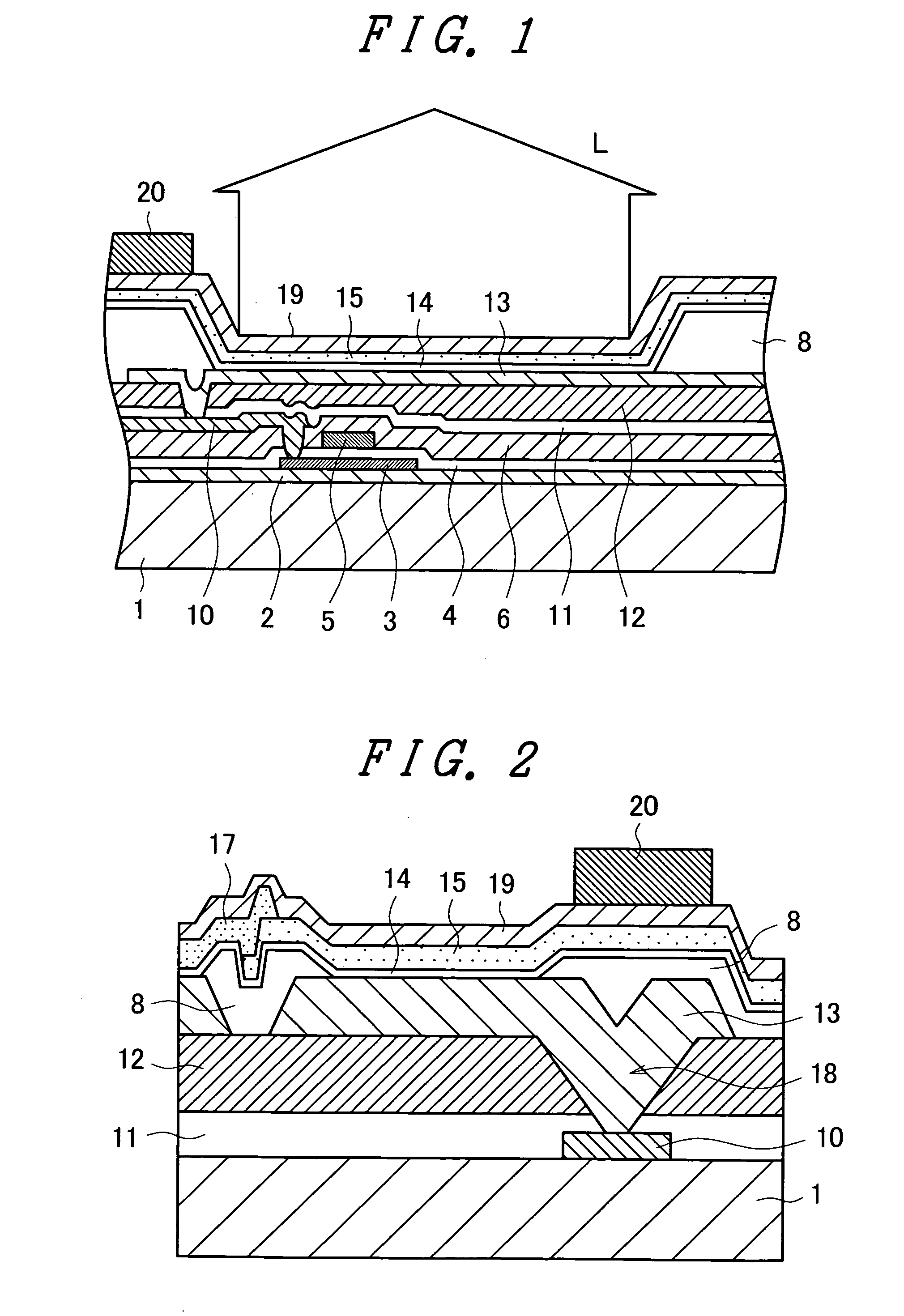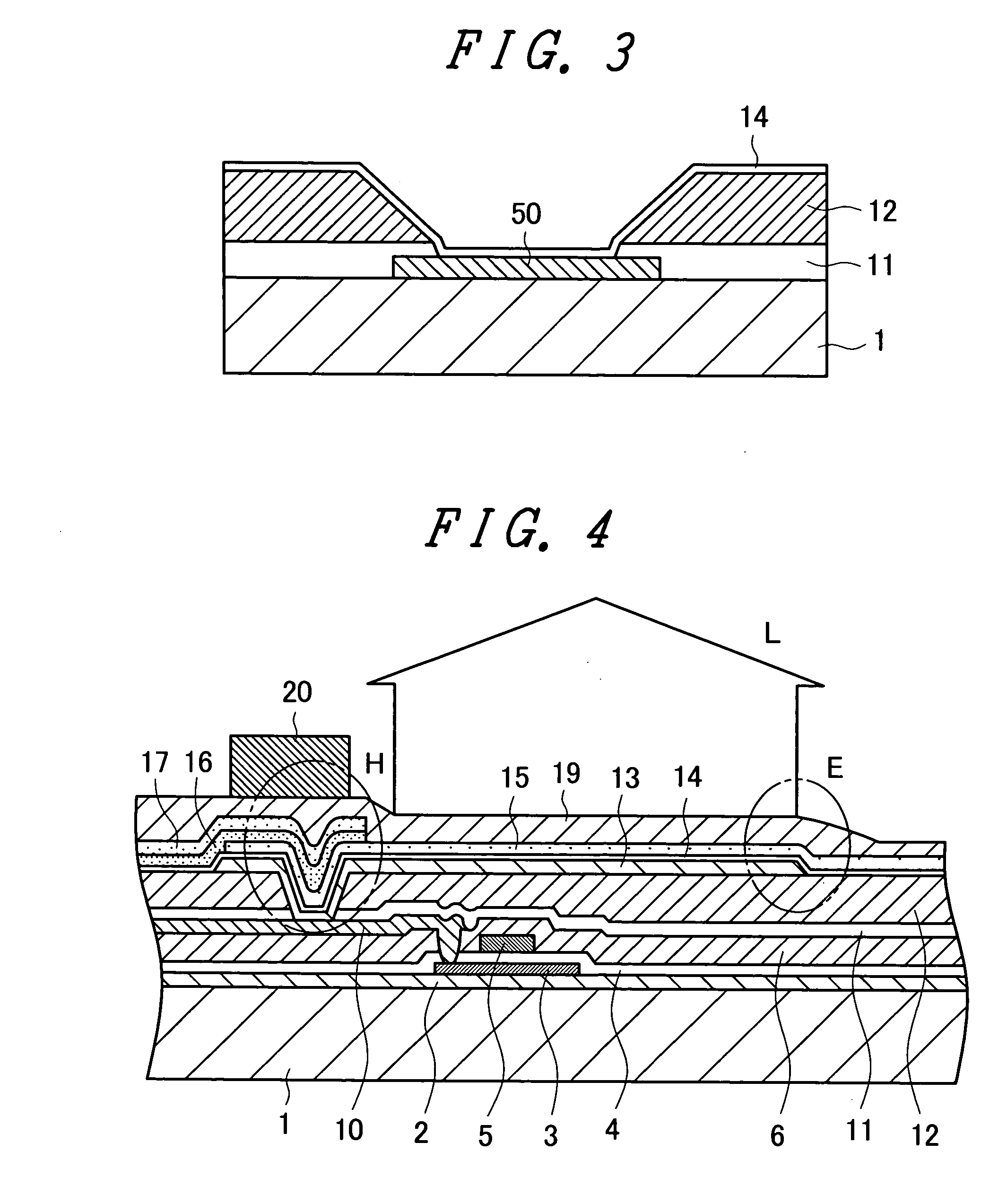Display device
a display device and top emission technology, applied in the direction of discharge tube luminescnet screens, organic semiconductor devices, discharge tube/lamp details, etc., can solve the problems of easy damage to the base reflective layer, etching residue or the like, and the cost of the polishing process, so as to reduce the number of processes, prevent the effect of reducing the manufacturing yield and reducing the manufacturing cos
- Summary
- Abstract
- Description
- Claims
- Application Information
AI Technical Summary
Benefits of technology
Problems solved by technology
Method used
Image
Examples
first embodiment
[0044]FIG. 1 is a sectional view of a top emission type organic electroluminescent display device according to the invention. In FIG. 1, a base film 2 for blocking impurities from glass is formed on a glass substrate 1. While there is a case in which one layer of a silicon nitride film or the like is formed as the base film 2, there is also a case in which the base film 2 is made of two layers, one each of a silicon nitride film and a silicon dioxide film. A semi-conductor layer 3 for configuring a TFT being formed on the base film 2, a gate insulating film 4 is formed covering the semi-conductor layer 3. In the embodiment, the semi-conductor layer 3 is an amorphous silicon film converted into a poly-silicon film by a laser annealing. A gate electrode 5, which is one portion of a gate wiring 5, is formed on the gate insulating film 4. The TFT of FIG. 1 is a top gate type TFT.
[0045]An inter-layer insulating film 6 being formed covering the gate electrode 5, a source / drain wiring (an ...
second embodiment
[0067]FIG. 4 is a sectional view of a second embodiment of the invention. A difference between the embodiment and the first embodiment lies in a point that the bank 8 is not formed between the lower electrodes 13. By forming the bank 8, the number of processes increases, as it is necessary to pattern a photosensitive acryl resin by means of a photolithography. Also, an acryl resin etching residue remains on the lower electrode 13, and this has an adverse effect on a light emitting property of the organic electroluminescent layer.
[0068]Although, in order to eliminate this kind of problem, the embodiment has a configuration which does not need the bank 8, even with this kind of configuration, it is possible to apply the configuration of the invention which does not carry out a patterning on the transparent conduction film 14 on the lower electrode 13. In FIG. 4, up to the formation of the planarizing film 12 is the same as the first embodiment shown in FIG. 1.
[0069]The lower electrode...
third embodiment
[0091]FIG. 11 is a sectional view of a pixel portion of a third embodiment of the invention. As with the second embodiment, the present embodiment does not form the bank 8 either. What the present embodiment differs from the second embodiment is the lower electrode 13, and a surface coating 131 of the lower electrode 13. In FIG. 11, up to the formation of the planarizing film 12 is the same as the first embodiment or the second embodiment. In the embodiment, as the bank 8 is not formed, the forming of a taper of 40 degrees or less at the extremity of the lower electrode 13, and forming a plurality of organic electroluminescent layers so as to overlap each other in the contact hole 18 are the same as in the second embodiment.
[0092]In the present embodiment, an aluminum-silicon alloy is used for the lower electrode 13. This is because an aluminum-silicon alloy has a high reflectivity, and generates only a small amount of dry etching residue. The aluminum-silicon alloy is deposited, by...
PUM
 Login to View More
Login to View More Abstract
Description
Claims
Application Information
 Login to View More
Login to View More - Generate Ideas
- Intellectual Property
- Life Sciences
- Materials
- Tech Scout
- Unparalleled Data Quality
- Higher Quality Content
- 60% Fewer Hallucinations
Browse by: Latest US Patents, China's latest patents, Technical Efficacy Thesaurus, Application Domain, Technology Topic, Popular Technical Reports.
© 2025 PatSnap. All rights reserved.Legal|Privacy policy|Modern Slavery Act Transparency Statement|Sitemap|About US| Contact US: help@patsnap.com



